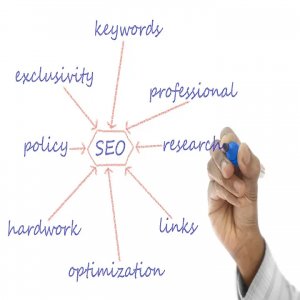
Business Case For A Circular Economy

The circular economy is an innovative model that emphasizes sustainability, resource efficiency, and waste reduction. For businesses, adopting circular economy principles, especially in IT, can lead to cost savings, enhanced operational efficiency, and a reduced environmental footprint. By shifting from a linear model to a circular one, companies can maximize the value of IT assets while contributing to a more sustainable future.
Table of Contents
-
Understanding the Circular Economy
-
Key Benefits of a Circular Economy for Businesses
-
Implementing Circular IT Practices
-
Challenges and Solutions
-
The Future of Circular Economy in IT
Understanding the Circular Economy
A circular economy focuses on extending the lifecycle of products by reusing, refurbishing, and recycling materials. This approach minimizes waste and reduces the demand for raw materials. In IT, circular practices involve strategies such as repurposing old hardware, adopting cloud-based solutions, and ensuring responsible e-waste management. By integrating these practices, businesses can lower costs and align with global sustainability goals.
Key Benefits of a Circular Economy for Businesses
Adopting circular economy principles provides multiple advantages:
-
Cost Reduction: Reusing and refurbishing IT equipment minimizes the need for new purchases.
-
Sustainability Compliance: Many governments and regulatory bodies encourage or mandate sustainable practices.
-
Brand Reputation: Consumers and investors prefer companies that prioritize environmental responsibility.
-
Waste Minimization: Efficient resource utilization leads to lower waste production and better supply chain management.
Implementing Circular IT Practices
Businesses can integrate circular economy strategies into their IT operations through several approaches:
-
IT Asset Recovery: Organizations can refurbish and repurpose outdated hardware instead of discarding it.
-
Cloud Computing: Transitioning to cloud services reduces the need for physical infrastructure, lowering energy consumption.
-
E-Waste Recycling Programs: Partnering with recycling firms ensures responsible disposal and recovery of valuable materials.
-
Product-as-a-Service Models: Leasing IT equipment instead of purchasing it outright helps maintain equipment longevity and sustainability.
Challenges and Solutions
While the circular economy offers significant benefits, businesses may face challenges such as:
-
High Initial Costs: Sustainable IT investments can require upfront capital. However, long-term savings and efficiency gains often outweigh these costs.
-
Lack of Awareness: Employees and stakeholders need education on circular economy principles. Training programs and awareness campaigns can address this issue.
-
Regulatory Compliance: Businesses must navigate different environmental regulations. Staying updated with global sustainability laws ensures compliance and risk mitigation.
The Future of Circular Economy in IT
The circular economy is expected to become a core business strategy for sustainable IT. Innovations in artificial intelligence, blockchain tracking for IT assets, and enhanced recycling technologies will make it easier for businesses to adopt sustainable practices. As industries move towards greener solutions, integrating circular economy principles into IT operations will be essential for long-term success.
For More Info: https://bi-journal.com/sustainable-it-circular-economy/
Conclusion
The business case for a circular economy is clear—cost efficiency, regulatory compliance, and environmental responsibility make it an attractive model for IT operations. By adopting circular practices, companies can reduce waste, maximize resource utilization, and contribute to a more sustainable future. As technology evolves, businesses that embrace circular economy principles will be better positioned for success in an increasingly eco-conscious market.
Author Bio
Article Comments
No Comments!
At present there are zero comments on this article.
Why not be the first to make a comment?
Similar Articles
Search Pages
User Upgrade
account to full use of editor,
Including hyperlinks
Article Categories
There are zero sub-categories in this parent category.
There are zero sub-categories in this parent category.

















